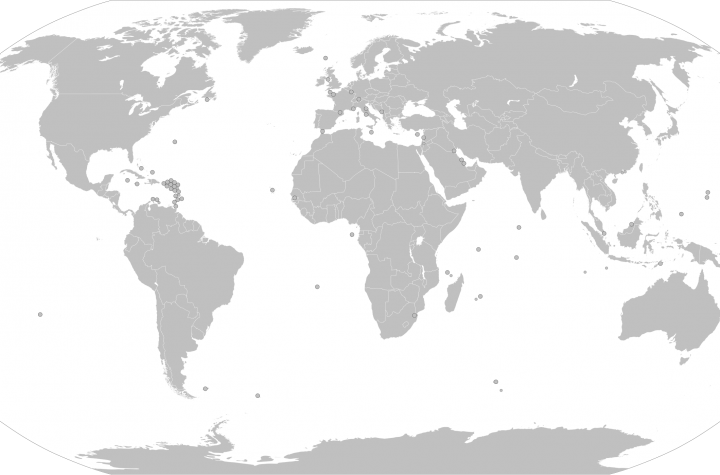
There are many sources that carry detailed answers to these questions and I could argue they are all correct but they miss the fundamental truth. From the world’s source of information Wikipedia, you can skip this as it’s quite hard going (!) basically a central bank is the entity that has the monopoly on the creation of the currency in a country. For example in the UK, only the Bank Of England can print bank notes and mint coins, banks cannot – https://en.wikipedia.org/wiki/Central_bank
This video is a slightly humourous, although accurate explanation of the what the Fed/Bank Of England/your country’s central bank is and how it works
httpv
So that answers the question “What is a central bank?” so let’s move on to what the purpose of a central bank is.
The common line from the media, economists and from politicians is that central banks create stability in the money system. In the US the Federal Reserve was created to be the lender of last resort. In other words it would use its monopoly power on the creation of the currency to bail out banks who ran into trouble. Whether you think this is a good idea or not, it is why is was created.
httpv
Others say that central banks were created to fund government in order for them to wage war, which again was another one of the reasons behind the creation of the Bank Of England, again, I refer you back to the Wikipedia article if you would like more information on this. The Federal Reserve in the USA has also served this purpose as this video details although the use of the word “evil” may be frowned upon.
httpv
It is unfortunate that most videos on YouTube are on the Federal Reserve, but as the wiki article on the Bank Of England (BOE)highlights, the Federal Reserve in the USA works the same way as the majority of central banks in the world including the Bank Of England. So simply substitute in the name of your country’s central bank in place of the Federal Reserve and you will have an accurate picture of your country’s central bank.

These are the two basic foundations for central banks, the waging of war and monetary stability.
But these “explanations” do not address the core purpose of a central bank. There is no easy way to say this, the purpose of central banks is to get the public to take on debt they would not voluntarily take on of their own accord.
How can central banks get people into debt against their will?
As touched upon in the first video, government as it exists in most countries has the power to force people to give it money against their will, to put it another way, governments have the power to compel the public to give it money with the threat of imprisonment for non-compliance.
Central banks harness this government power.
They do this by loaning money to the people indirectly in the form of loans to the government. Central banks are comfortable lending mony to governments because governments have something that no other entity has and that is the monopoly on the use of force.
httpv
Only governments can initiate force against someone if they do not do as the government wants.
So how do central banks make money?
Central banks make money by charging the government interest on the money they lend to the government. And as interest is charged in the form of money and as money is labour and resources, this interest is paid in the form of the citizen’s labour and/or resources, whether the resources be in the form of raw materials like gold or silver or things like property and machinery.
So how much do people pay in interest per year due to government borrowing in their name?
In the USA as of 2012 the figure is 300 billion dollars a year which equates to 1,000 dollars a year for every man, woman and child in America (assuming a population of 300 million people)
In the UK as of 2012 the total interest payment required to be paid by UK citizens was 44 billion poundswhich equates to an interest bill of 733 pounds a year for every man, woman and child in the UK (assuming a population of 60 million people).
So how does this interest bill look in a historical perspective?
The long-term interest rate of UK government debt is 3% (short-term 1.05%) as of 2012
The long-term interest rate of UK government debt was 4.8% (short-term around 5%) in 1998
Figures are from here http://www.dmo.gov.uk/reportView.aspx?rptCode=D4H&rptName=241abecb-08b4-47db-b0c5-9431dacbb02f||GILT%20MARKET%20(4)&reportpage=Conven_Gilts
We are at a time of unprecedented low-interest rates so assuming interest rates would return to their 1998 levels the average UK citizen would see their yearly interest payment increases by around 50% to 1,100 GBP.
For someone on an average income of 25,543GBP per year the interest payments equate to 2.8% of total income at 2012 interest rates and 4.3% at 1998 interest rates.
So in summary
Central banks are a private entity which have the monopoly on creation of a nations currency. Central banks like the Federal Reserve in the USA and Bank of England are an entity which makes money by charging the citizens interest on the debt accumulated by government.






More Stories
USDA/China Doing Gain-of-Function Work on H5N1 Bird Flu Since 2021
My email to Dr. Anne Bass re: National Academies evidence review on COVID shot side effects
Were you (or someone you know well) injured after getting a COVID vaccine?